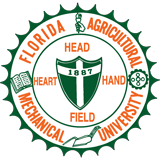
Digital illustration By Yan for Adobe Stock
Suvranu De, a mechanical engineering professor and dean of the FAMU-FSU College of Engineering, co-edited a book entitled “Multiscale Modeling in Biomechanics and Mechanobiology,” almost ten years ago. Recently, the book has emerged in the top 20% of all cited books in the Springer collection.

The book serves as a valuable resource for graduate students and researchers who are interested in theoretical and computational models that establish connections between biomechanical phenomena across various scales. It offers guidelines and examples for developing multiscale models in different systems and organisms.
Biomechanics and mechanobiology explore the interactions between physical forces and biological systems at the molecular, cellular, tissue, and organ scales. They bridge the science of mechanics with genetics and molecular biology.
The popular book has the editor wanting more, and De said a new book might be in the works in the future. The field is progressing quickly De says, “We are re-thinking where our current interests will take us in the next ten years, perhaps intertwining multiscale modeling with AI and machine learning.”
De explains that people may have liked the book because of the democratic roots of the publication. The idea of the book originated from De’s engagement with the Multiscale Modeling Consortium, established by the Interagency Modeling and Analysis Group. This group comprises government program officials from multiple federal funding agencies, including the National Institutes of Health and the National Science Foundation.
“We decided early on that we wanted to solicit papers on the techniques people were using for scale linking from around the world,” De said. “We wanted to understand their thought processes, computational methodologies, and whether they incorporated sound validation methods based on experiments.”
This inclusive approach may have contributed to the international appeal, De says, “It’s not just our ideas, but rather it fosters thoughtful discussions, raises more questions than it answers and charts a scientifically robust path forward. Readers may have found value in exploring the state-of-the-art research at that time.”
RELATED ARTICLES
Researchers Receive $1.6M NIH Grant to Develop Virtual Bariatric Endoscopic Simulator (ViBE)
Improving Outcomes with AI-Powered Virtual Surgical Simulations
Researchers Launch U.S. Army Study Using Ultrasound to Examine Burn Wounds

